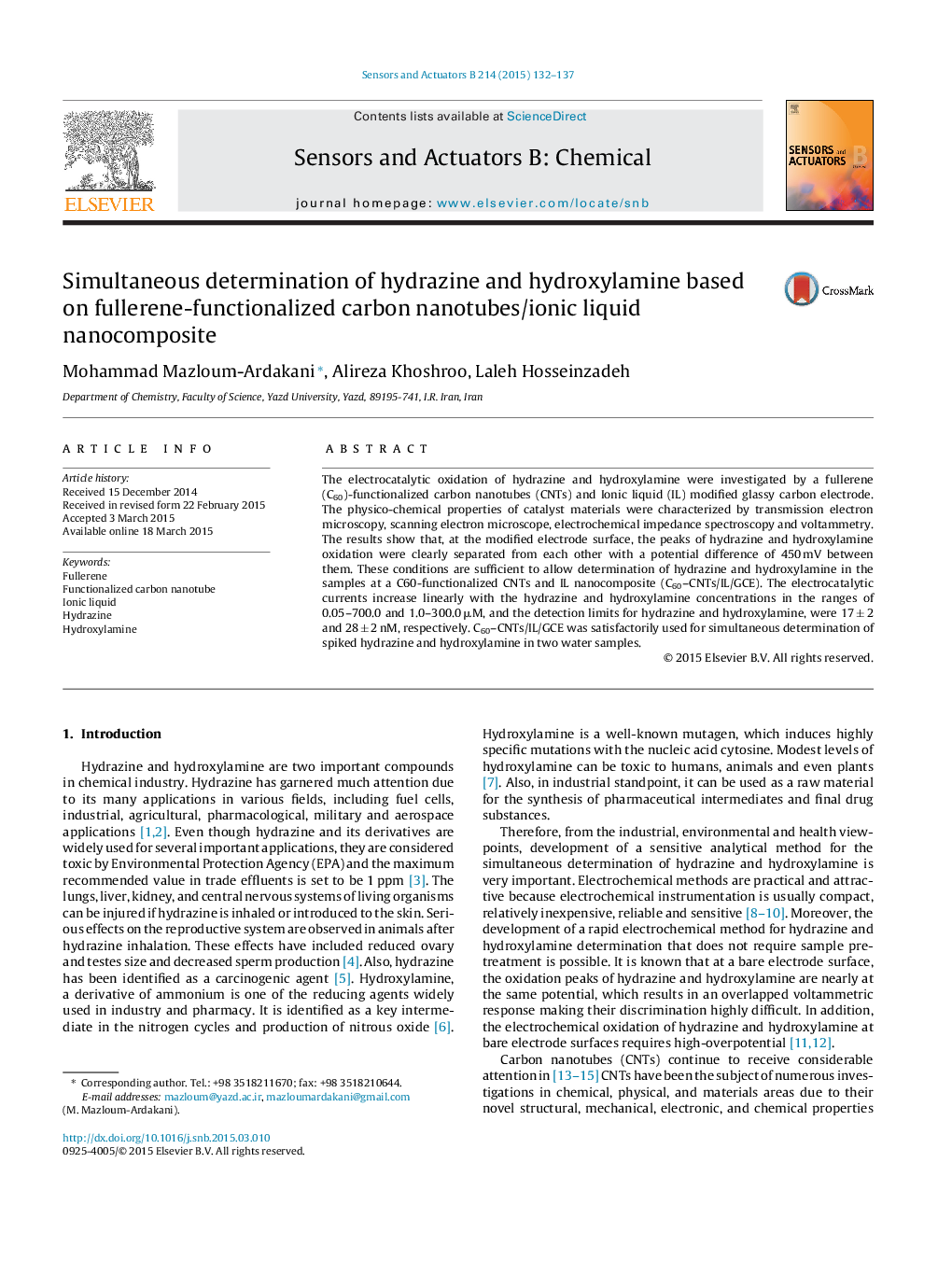| Article ID | Journal | Published Year | Pages | File Type |
|---|---|---|---|---|
| 741695 | Sensors and Actuators B: Chemical | 2015 | 6 Pages |
The electrocatalytic oxidation of hydrazine and hydroxylamine were investigated by a fullerene (C60)-functionalized carbon nanotubes (CNTs) and Ionic liquid (IL) modified glassy carbon electrode. The physico-chemical properties of catalyst materials were characterized by transmission electron microscopy, scanning electron microscope, electrochemical impedance spectroscopy and voltammetry. The results show that, at the modified electrode surface, the peaks of hydrazine and hydroxylamine oxidation were clearly separated from each other with a potential difference of 450 mV between them. These conditions are sufficient to allow determination of hydrazine and hydroxylamine in the samples at a C60-functionalized CNTs and IL nanocomposite (C60–CNTs/IL/GCE). The electrocatalytic currents increase linearly with the hydrazine and hydroxylamine concentrations in the ranges of 0.05–700.0 and 1.0–300.0 μM, and the detection limits for hydrazine and hydroxylamine, were 17 ± 2 and 28 ± 2 nM, respectively. C60–CNTs/IL/GCE was satisfactorily used for simultaneous determination of spiked hydrazine and hydroxylamine in two water samples.
Graphical abstractFigure optionsDownload full-size imageDownload as PowerPoint slide
